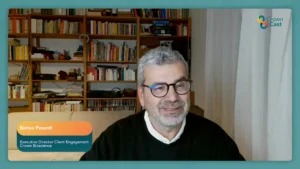How To Assess Your Practice’s Medical Emergency Response Needs
Since general practices see sick patients and those who accompany them every day, doctors can count on needing to respond to a medical emergency at some point in their careers. A 2007 American Academy of Pediatrics survey of urban family doctors and pediatricians showed 62% assisted at least one child patient per week with a medical emergency.1
Perhaps you’ve experienced a medical emergency at your practice. Or you’re familiar with emergencies through your medical education or journals. Either way, it’s vital to have an emergency response plan for an office medical crisis.
Conducting a Needs Assessment
Most medical practices inevitably need to provide medical help to someone experiencing one of the five most common medical emergency conditions. You’ll want to make sure you have the right medications and devices – and know how to use them. More on that later.
Being prepared begins with an awareness of your office, so conduct an informal needs assessment. Though they seem simple, these questions below will inform how you prepare.
“The emergency should be the only thing that is unplanned,” says Dr. Arthur Pancioli, chair of the emergency medicine department at University of Cincinnati and member of Banyan’s Medical Advisory Board.
“All of the rest is up to you. Preparation, the right equipment, and the right medications save lives,” he says.
Life Support Training
Are you or your staff certified in Basic Life Support (BLS)? The American Academy of Family Physicians (AAFP) recommends CPR / BLS certification for any practice that provides an immediate response to a medical problem before 911 can arrive.2
According to emergency medical expert Dr. Stanley Malamed, “The doctor is always expected to initiative emergency management and be capable of maintaining a patient’s life through application of whatever steps of BLS are required.”3
What about ACLS? ACLS is an advanced skill set taught to medical personnel who may have patients that require interventions beyond the scope of BLS. For the general practitioner, having ACLS may be considered more than is needed. Only you can make that decision, based on your practice’s proximity to emergency services, hospital systems, and your specific training.
If ACLS certified, keep in mind that to perform ACLS you’ll need an always-available stock of cardiac medications such as atropine, verapamil and adenosine, plus oxygen.
Profile of Your Patient Population
How are your patients different from the general population? Those differences likely mean you need to be prepared for a more specific response. Examples:
- Having a significant number of patients with heightened risk for anaphylactic reactions indicates you will need to maintain an adequate, up-to-date supply of epinephrine (auto-injector for rapid initial response; back-up injection in case of a biphasic reaction), diphenhydramine, and possibly injectable steroids such as SoluMedrol or SoluCortef.
- Pediatric patients are not so much at risk of a cardiac event, of course. But they experience other medical emergencies at higher frequencies, such as dehydration and respiratory distress. That means you need to be ready with pediatric-sized administration of epinephrine auto-injectors, Sodium chloride, and a portable oxygen setup including pediatric-size masks.
Proximity to Emergency Medical Services
Are 911 services relatively close? Consider your office’s proximity to medical emergency support. Are you next to a health center or hospital, or in remote farm or ranch country? How long does it usually take for emergency services to reach you? A 2015 JAMA study on response time for medical EMS showed an average of 7 minutes in urban areas; 14 minutes in rural areas.4
Answers to these questions can inform your practice’s training needs. For example, based on average response times, a rural practice is more likely than an urban one to determine ACLS certification is critical so they can perform advanced airway management procedures.
Emergency Medications and Supplies
Do you have on hand current medications and supplies needed to provide immediate medical response in advance of the arrival of emergency services? While some emergency situations can be without administration of medications, there are occasions where the proper array and use of medications may save lives. Be prepared with a medical emergency kit and related devices to provide always-ready support.
What exactly do you need? There are no hard and fast rules. A good rule of thumb: include in your kit each emergency medication and piece of equipment that your training qualifies you to treat.
Banyan can help with practice-type-specific kits, and automated management of your medications and supplies. We’re guided by a medical advisory board that includes physicians who understand the issues general practitioners face in being prepared for a medical emergency.
Because keeping updated medications is critical to the quality of your medical emergency response, Banyan provides the OnTraq automated replenishment service with every kit. OnTraq tracks the expiration dates of emergency medications and supplies in your emergency medical kit or crash cart and prompts replacement shipments prior to their expiration. This service helps you maximize shelf life through just-in-time management of your medications and supplies that have an expiry date.
Consult a Banyan Medical Emergency Readiness Expert
Banyan’s readiness advisors can provide specific recommendations for emergency medical kits and related devices and supplies right for your practice, based on your needs assessment. Call us at 800-782-8548, or email customerservice@statkit.com.
Read more at statkit.com
—
1 Preparation for Emergencies in the Offices of Pediatricians and Pediatric Primary Care Providers, Pediatrics, 2007;120;200. https://www.ncbi.nlm.nih.gov/pubmed/17606580
2 Medical Emergency Preparedness in Office Practice. Seth L. Toback, MD, Washington, Pennsylvania. Am Fam Physician. 2007 Jun 1;75(11):1679-1684.
3 Medical Emergencies in the Dental Office, 7th Edition. Malamed, Stanley F. Chicago: Elsevier, 2015.
4 Emergency Medical Services Response Times in Rural, Suburban, and Urban Areas. Howard K. Mell, MD, MPH, CPE1; Shannon N. Mumma, MD2; Brian Hiestand, MD, MPH2; et al. https://jamanetwork.com/journals/jamasurgery/article-abstract/2643992.









